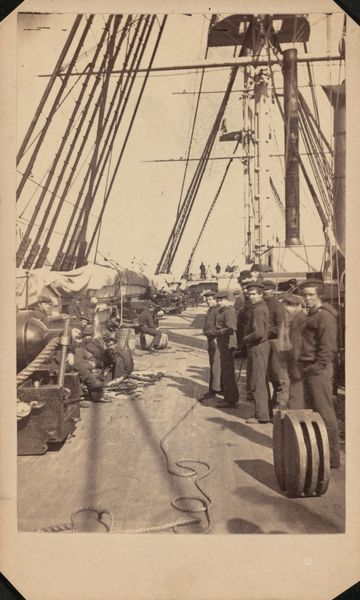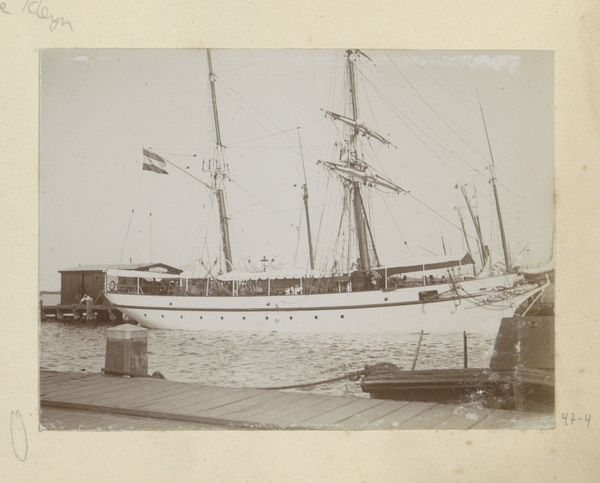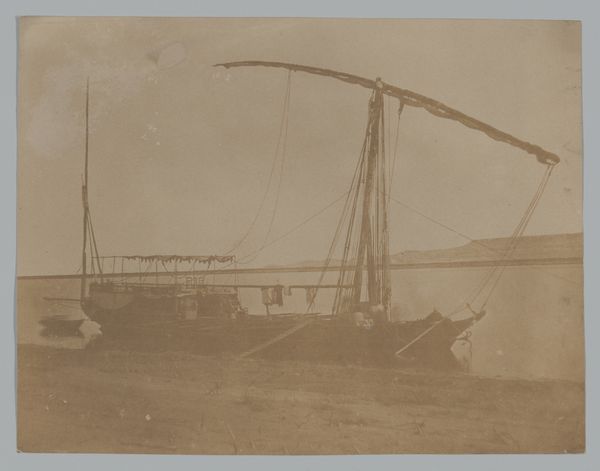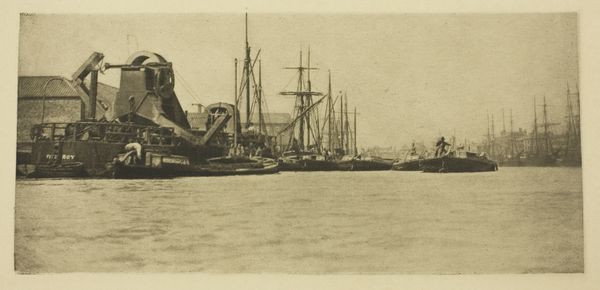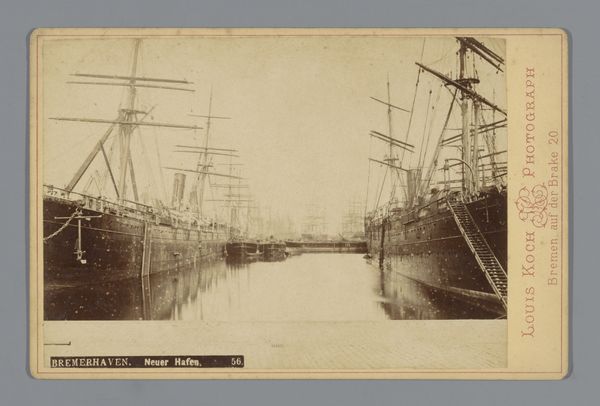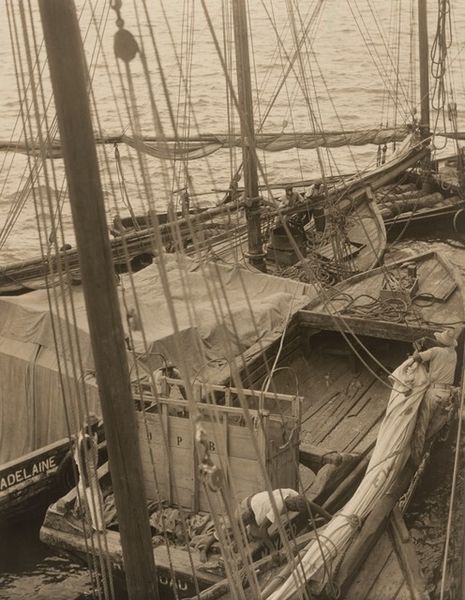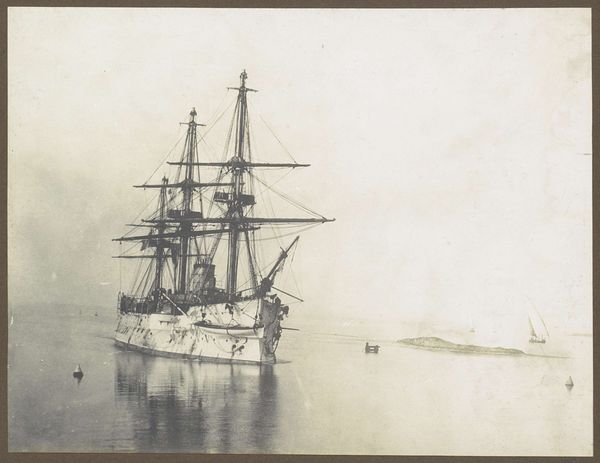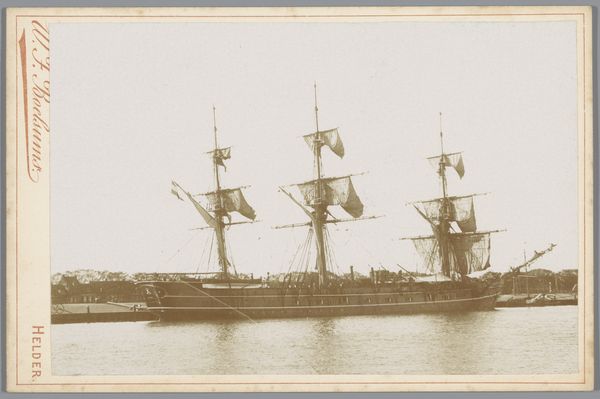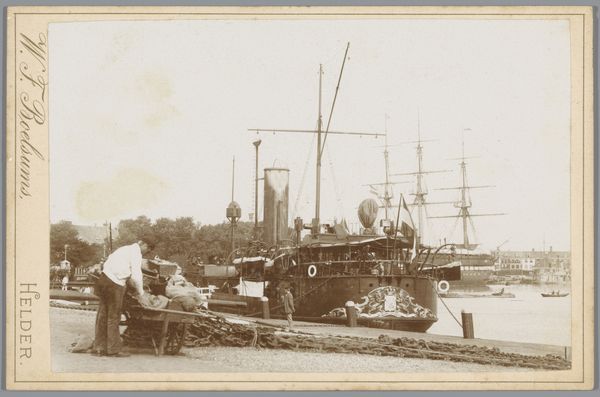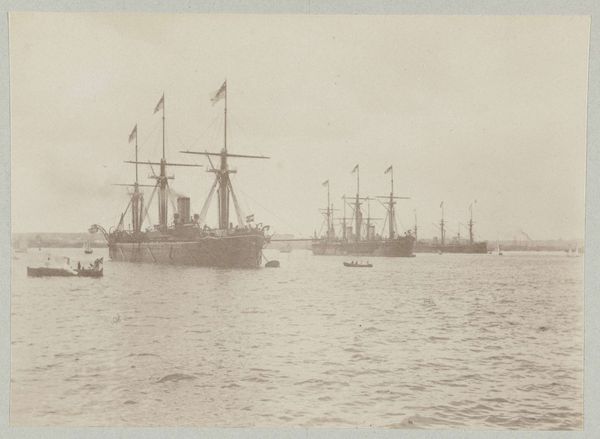
Dimensions: image: 27 x 34.8 cm (10 5/8 x 13 11/16 in.)
Copyright: National Gallery of Art: CC0 1.0
Curator: Linnaeus Tripe captured this image, "Quarterdeck of HMS ‘Impregnable’," between 1852 and 1854, utilizing the albumen print process. Editor: The sheer scale is the first thing that strikes me. The vastness of the deck, the towering masts, even in sepia, there is a looming, imposing presence of British naval power. Curator: Absolutely, the "Impregnable" was one of Britain's largest and most formidable warships, reflecting the nation's maritime dominance during that era. This photography serves as a document of British Imperial might. Editor: I see the power, but also the exploitation it represents. These ships were tools of colonization, transporting people and resources, enforcing unequal trade agreements. Are we meant to celebrate this, or confront its legacy? Curator: A valid point, this vessel enforced colonial governance. However, I think Tripe, trained initially in the East India Company's military service, would have had a romanticised idea of this power and likely made a document of that perspective. It's important to consider photography's role at this moment in solidifying these views of empire. The attention to detail - rigging, the clean deck, the posed crew -- elevates the status of both ship and empire. Editor: Yes, these crisp lines contribute to a feeling of control. Note that everyone on deck is male and mostly white, a classic symbol of colonial hierarchies and gendered power. It presents an image of seamless operation while omitting stories of exploitation that ensured such precision and efficiency. Curator: I think it’s difficult to apply our modern understanding, despite all the contemporary narratives present. But to further this, and from a technical angle, the detail is stunning given the limitations of the albumen process in the 1850s. It presents the pinnacle of ship design. Editor: Its presence reminds us of the narratives of that time and compels a renewed look through critical eyes. The photograph, rather than simply illustrating naval strength, becomes a mirror reflecting complex legacies.
Comments
No comments
Be the first to comment and join the conversation on the ultimate creative platform.
